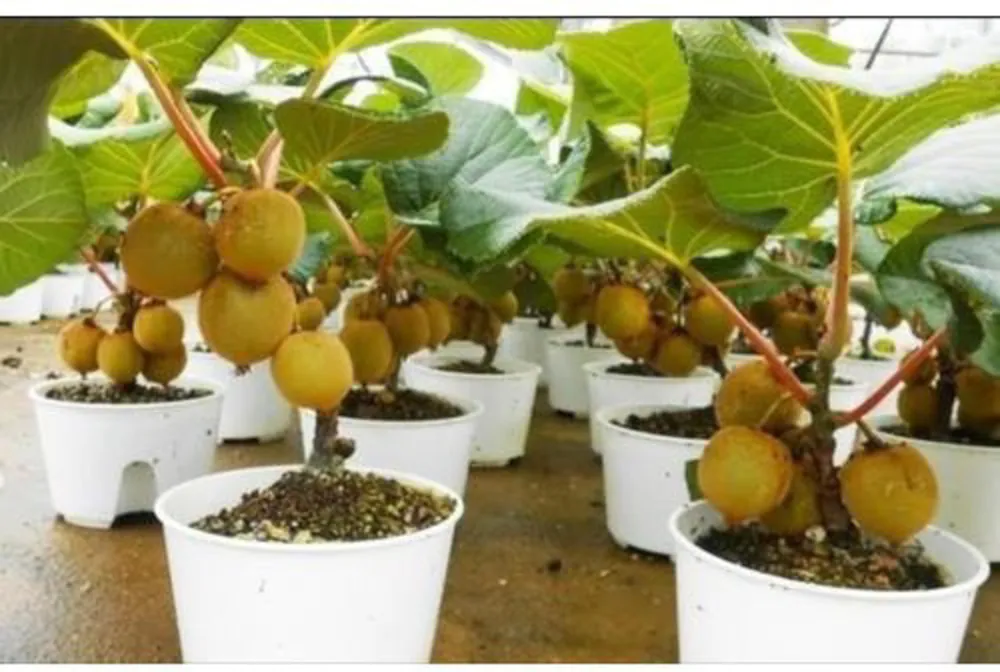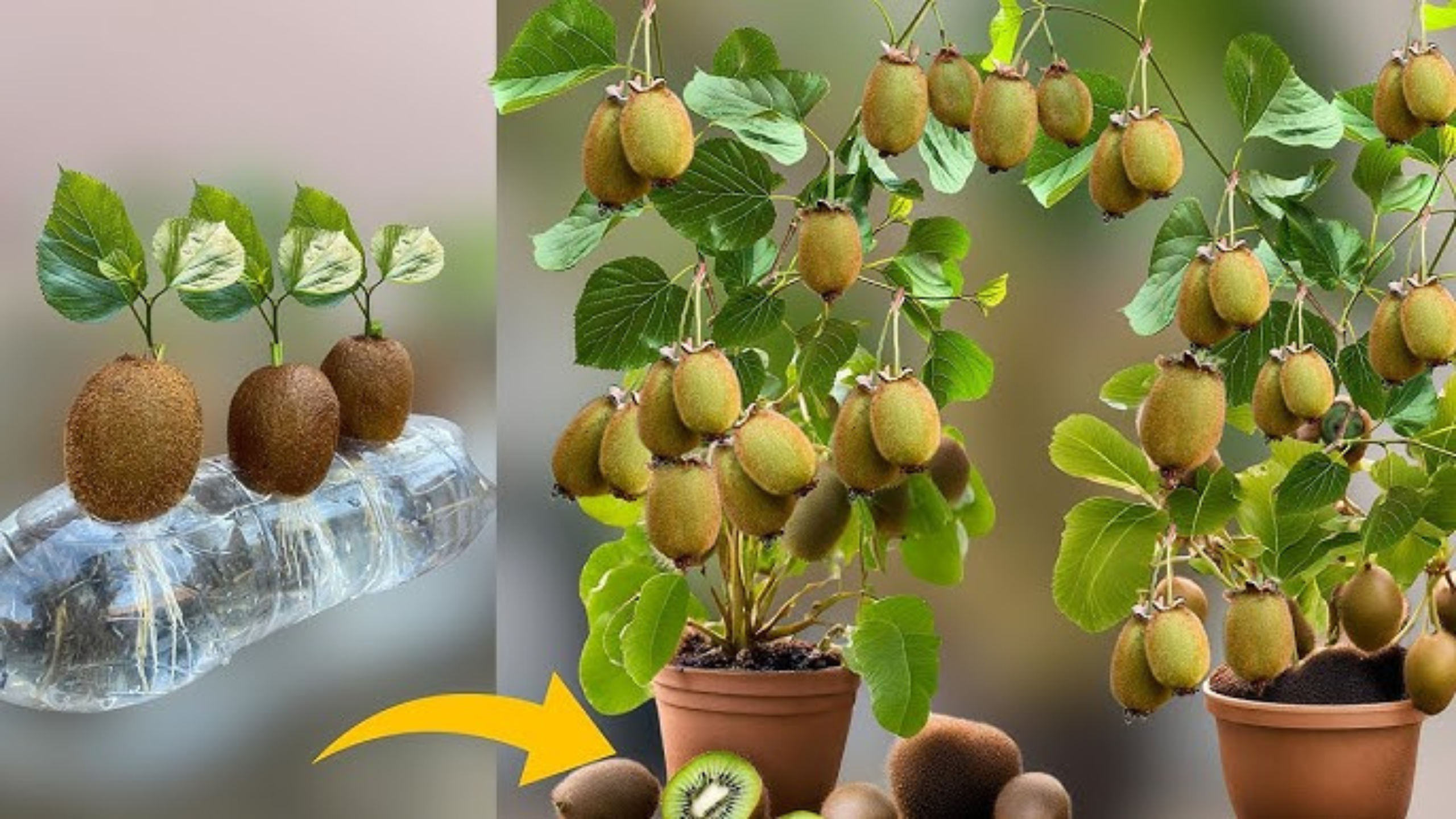Growing kiwi from seed is a rewarding project for home gardeners. While it takes patience and care, nurturing your own kiwi vines can yield lush greenery and eventually, sweet, tangy fruit. In this guide, we’ll walk you through the entire process—from stratifying the seeds to transplanting your young kiwi plant and ensuring it thrives.
Step 1: Preparing the Seeds with Cold Stratification
Kiwi seeds require a process called stratification, which mimics natural winter conditions and helps break seed dormancy. This is a crucial step if you want your seeds to germinate successfully.
Start by placing the kiwi seeds on a damp paper towel or mixing them with moist sphagnum moss. Then, seal them inside a plastic bag and place the bag in your refrigerator. The cold, moist environment encourages the seeds to “wake up” gradually.
Duration: Keep the seeds in the fridge for 3 to 4 weeks.
Tip: Check the seeds every few days. Make sure the paper towel or moss remains damp, but not soggy. If any mold appears, replace the material immediately to prevent rot.
Step 2: Planting the Stratified Seeds
Once the stratification period is over, it’s time to plant the seeds. Choose a small seedling pot and fill it with a light, well-draining mix—ideally, a combination of potting soil and perlite.
Planting depth: Bury each seed about 1/4 inch deep.
Moisture: Water the soil gently to settle it, but avoid overwatering.
Humidity: Cover the pot with plastic wrap to create a mini-greenhouse effect. This helps maintain warmth and moisture, both of which are essential for germination.
Place the pot in a warm, bright area. A sunny windowsill or a spot under grow lights works well. Maintain consistent warmth (ideally between 70–75°F or 21–24°C) for the best results.
Step 3: Watching for Sprouts
In a few weeks, you should start to see tiny green shoots breaking through the soil. This is a great sign that your kiwi seeds are thriving.
Keep the soil evenly moist, but not soaked. Excess water can lead to root rot, especially at this early stage. Once the seedlings develop a few sets of true leaves, they’re ready for the next step.

Step 4: Transplanting the Seedlings
When your seedlings are strong enough, it’s time to move them into a larger pot. Kiwi plants have a deep root system, so the container should be generous in size.
Recommended pot size: At least 18–24 inches wide and 24 inches deep.
Soil mix: Use a blend of potting soil, compost, and perlite to provide rich nutrients and good drainage.
Gently remove each seedling from its starter pot, being careful not to damage the delicate roots. Replant them in the new pot and water thoroughly.
Step 5: Caring for Your Young Kiwi Tree
Kiwi plants love the sun. Place your pot in a sunny location that receives at least 6–8 hours of light daily. If growing indoors, supplement with full-spectrum grow lights to ensure healthy development.
Watering: Keep the soil moist but not soggy. Check the moisture level regularly, especially during hot or dry conditions.
Feeding: Use a balanced fertilizer (such as 10-10-10) every 4–6 weeks during the growing season (spring to early fall). This encourages strong growth and prepares the plant for future fruiting.
Additional Tips for Success
Support system: Kiwi vines need support to grow properly. Consider adding a trellis or small arbor to your container.
Pollination: Most kiwi varieties are dioecious, meaning you’ll need both male and female plants for fruit production. Keep this in mind if your goal is to harvest kiwi fruit eventually.
Patience pays off: It can take 3–5 years for a kiwi plant to mature and produce fruit, but the journey is well worth the wait.


buy amoxicillin generic – https://combamoxi.com/ buy amoxicillin generic
diflucan 200mg tablet – flucoan buy diflucan 100mg generic
cenforce for sale online – order cenforce without prescription buy cenforce 100mg online
buying cialis without prescription – https://ciltadgn.com/ cheapest 10mg cialis
when will teva’s generic tadalafil be available in pharmacies – how long i have to wait to take tadalafil after antifugal cialis tadalafil & dapoxetine
ranitidine 300mg oral – https://aranitidine.com/# purchase ranitidine without prescription
buy viagra with a mastercard – viagra usa buy how to buy viagra online canada
With thanks. Loads of expertise! doxycycline en espaГ±ol
Thanks on putting this up. It’s evidently done. https://buyfastonl.com/gabapentin.html
Greetings! Jolly gainful suggestion within this article! It’s the petty changes which liking espy the largest changes. Thanks a quantity towards sharing! https://ursxdol.com/cenforce-100-200-mg-ed/
This website positively has all of the bumf and facts I needed about this participant and didn’t comprehend who to ask. https://prohnrg.com/
Facts blog you possess here.. It’s intricate to espy high worth writing like yours these days. I truly respect individuals like you! Withstand care!! traitement gale stromectol
This is the kind of content I get high on reading. https://ondactone.com/product/domperidone/
I couldn’t resist commenting. Adequately written!
https://proisotrepl.com/product/domperidone/
More posts like this would make the blogosphere more useful. http://www.underworldralinwood.ca/forums/member.php?action=profile&uid=488149
dapagliflozin 10mg sale – janozin.com order generic forxiga 10mg
order xenical without prescription – this xenical cheap
Greetings! Very useful advice within this article! It’s the crumb changes which wish espy the largest changes. Thanks a quantity towards sharing! http://www.gtcm.info/home.php?mod=space&uid=1169349
Tanks for the valuable info. Will try to grow kiwis from seed. Best regards
PS: No thanks to the bunch of criminal medication pushing arseholes wasting comment space.
YES, VERY CONFUSED.
You can protect yourself and your dearest by way of being cautious when buying panacea online. Some pharmacy websites operate legally and put forward convenience, solitariness, rate savings and safeguards for purchasing medicines. buy in TerbinaPharmacy https://terbinafines.com/product/lamictal.html lamictal
You can shelter yourself and your stock by way of being alert when buying panacea online. Some pharmacopoeia websites control legally and offer convenience, secretiveness, cost savings and safeguards for purchasing medicines. buy in TerbinaPharmacy https://terbinafines.com/product/risperdal.html risperdal
This website really has all of the bumf and facts I needed adjacent to this case and didn’t know who to ask. viagra homme prix en pharmacie sans ordonnance
You can shelter yourself and your stock close being cautious when buying prescription online. Some druggist’s websites manipulate legally and provide convenience, solitariness, cost savings and safeguards as a replacement for purchasing medicines. http://playbigbassrm.com/es/
More delight pieces like this would urge the web better.
https://t.me/dragon_money_mani/36